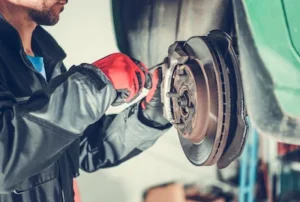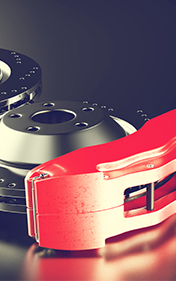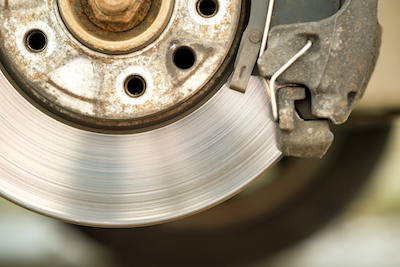Brake Shops: The Ultimate Guide to Brake Repairs in Las Vegas
 Some systems in your vehicle can be scheduled for service at your convenience. Your car’s braking system is not one of them! When you apply the brakes, your car must either decelerate to the proper speed or come to a full and complete stop—at a safe distance from other vehicles. Anything less could be inviting disaster for everyone concerned. If you suspect a problem with your brakes, make an immediate appointment for a full inspection. This will ensure both your safety and that of your passengers. It can also save you considerable time and money by eliminating the need for more expensive repairs in the future. Come to Tire Works Total Car Care in Las Vegas for complete brake service and repair!
Some systems in your vehicle can be scheduled for service at your convenience. Your car’s braking system is not one of them! When you apply the brakes, your car must either decelerate to the proper speed or come to a full and complete stop—at a safe distance from other vehicles. Anything less could be inviting disaster for everyone concerned. If you suspect a problem with your brakes, make an immediate appointment for a full inspection. This will ensure both your safety and that of your passengers. It can also save you considerable time and money by eliminating the need for more expensive repairs in the future. Come to Tire Works Total Car Care in Las Vegas for complete brake service and repair!
The Health of Your Car’s Brakes
Every year there are approximately 300,000 car accidents due to brake failure. Driver neglect is a contributing factor in many of these collisions. Routine brake inspections and brake service can prevent needless injury and death, as well as vehicular damage.
Refer to your owner’s manual for the manufacturer’s recommendation concerning brake inspections. A general rule is to have your brakes checked every six months or 6,000 miles—whichever comes first. The purpose of these inspections is to identify minor faults within your braking system before these slight issues develop into major challenges. Ask the ASE-certified staff at Tire Works Total Car Care to add this routine brake inspection service to your other preventative maintenance protocols.
It’s important to know that your driving habits can have an effect on your brakes in terms of their efficiency and stopping power. It is recommended that you:
- Try to avoid speeding.
- Try to prevent the need for sudden braking or panic stops.
- Don’t drive with one foot on the brake—this results in excessive wear.
- Steer clear of stop-and-go traffic whenever there is a viable alternative.
- Travel on major highways whenever possible.
Following these guidelines can help you save money by minimizing wear and tear on your brakes.
Routine Inspection is the Key
A routine braking system inspection at Tire Works includes thorough checks of the following:
- Brake shoes
- Brake pads
- Brake drums
- Rotors
- Brake calipers
- Brake cylinders
- Electronic sensors
- Brake pedal response
- Brake lines
- ABS modules
All of your car’s fluid levels will be checked and refilled as needed. The vehicle will also be test-driven. You will then be given a summary of the results and an estimated cost of any recommended work.
During the intervals between inspections, you can also measure the width (or thickness) of the brake pads on your own to ascertain whether your car needs an inspection or repair. New pads generally have a width of 12mm. Our mechanics recommend replacing brake pads when they are worn down to about 3mm–4mm. Replacement ahead of schedule will prevent the rotors from being scarred and damaged by excessively worn pads—thus extending their service life.
Our mechanics use the latest advances in auto technology to inspect and repair every component of your car’s braking system. It’s important to select a reputable auto shop with technicians that you trust. We keep detailed records of your car’s inspection and repair history. This simplifies the process of staying up-to-date and on track with your vehicle’s maintenance. In addition, by building a strong relationship with our customers—one based on mutual trust and respect—we seek to create an environment that works to everyone’s advantage.
Replacing Your Brake Pads
Here are some general guidelines to be aware of when our mechanics recommend that you change out your car’s brake pads:
- Replace both the front and rear brake pads at the same time.
- Don’t swap out just a single brake pad on either axle. They must be replaced as a pair.
- Keep in mind that it is normal for the front pads to be replaced more often than the rear. This is due to your car’s overall weight distribution—the front of the vehicle is heavier.

Selecting the Right Brake Pad Material
Brake pads can be divided into several categories. These include semi-metallic, ceramic, and organic pads. Since there are both advantages and disadvantages associated with each type, it’s best to consult with a Tire Works brake specialist before installation. All brake pads, regardless of composition, undergo the same (or similar) manufacturing and testing procedures before being approved for sale and released to vendors. Your decision on which type of brake pad to install will depend on your driving tendencies, vehicle usage patterns, and overall budget.
Here is some basic information concerning each type of brake pad:
Semi-Metallic Brake Pads
Semi-metallic pads are fabricated from metal fibers—typically high-quality steel, copper, iron, and other composite alloys. These fibers are then blended with a graphite lubricant and other fillers to construct the brake pad. They perform well under a wide range of conditions and have good heat dissipation properties. In addition, they are durable, economical, and enjoy the most widespread use of all brake pad types.
Ceramic Brake Pads
These pads are made from ceramics, cotton (or other) fibers, and bonding materials. The process creates brake pads that are extremely stable under high temperatures. Among their many advantages, they are lightweight and durable with superb heat dissipation qualities. They are also quieter and longer lasting than semi-metallic brake pads. However, they are somewhat more expensive.
Organic Brake Pads
Organic brake pads are rapidly gaining in popularity and acceptance. They are being used by approximately 67% of new vehicles sold within the United States. Organic pads are produced with a blend of fibers and natural materials like rubber, carbon compounds, glass (or fiberglass), and KevlarⓇ. This blend is then fused with resin. They have a high heat tolerance and are environmentally safe. However, they are known to wear out faster than other types of brake pads and thus have a shorter service life.
The Cost of a Brake Job
This is an obvious concern—as well as a frequently asked question—for drivers. However, there is no standardized, universal answer. It depends on the make and model of your vehicle, how often and how far you drive, and the driving conditions you encounter.
